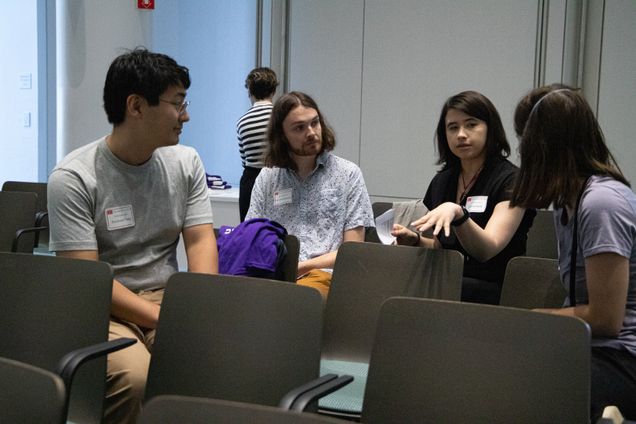NRT Bootcamp ’23 a Three-Day Success

Last week, 20 NRT trainees were given a “bootcamp” training of three days, ingratiating them into world of Neurophotonics research at Boston University. On the first day, our trainees were introduced to the program with a talk from NPC Director David Boas, whereafter they performed an introductory exercise to learn about one another’s research, as well as how to pitch themselves and their research.
Following presentations and lectures introduced trainees to the labs, research, and technology accessible through the Neurophotonics Center and beyond, with several professors and student researchers providing insight into the functionality, process, and community NRT trainees can come to expect.
This included several hands-on training sessions with such methods as laser and optical alignment practice, optical control and imaging of neural networks in vivo, and more.
Biomedical Engineering PhD student and NRT trainee Grant McConachie said: “I learned a lot about different imaging modalities over the course of the bootcamp. It was very helpful getting to go into a bunch of labs to look at the microscopes they used and how they were using them. Even though I work in a dry lab, and will rarely do experiments, learning the ways in which the data I will be using is collected is very valuable and gives me better intuition on what’s going on behind the scenes.”
Doctoral student Erynne San Antonio shared: “I really liked the boot camp in how it summarized the fields of neural engineering and optics. Honestly loved the diversity in the labs that we toured, especially in a variety of departments as I usually don’t interact with labs outside of my own department (biomedical engineering). For instance, Chris Gabel‘s lab on the medical campus exposed me to C. Elegans and the work related to them. Personally, I might want to incorporate working with C. Elegans in one of my projects due to their well-documented nervous system. Furthermore, I appreciated the hands-on demonstrations of the microscopes and how they work, especially the OCT system as I had only ever seen the diagram of how it worked so seeing it in person was really helpful!”